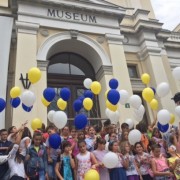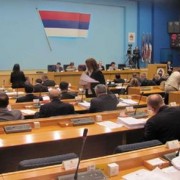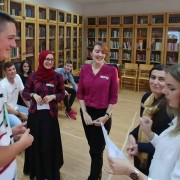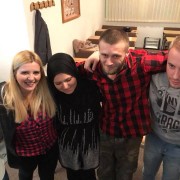Speeches Shim

The National Museum of Bosnia and Herzegovina (BiH), a custodian of culture for a region torn by ethnic divisions, re-opened its doors to the public on Sept. 15, after a three-year closure due to lack of funding and political disagreements.

Citizens in Bosnia and Herzegovina (BiH) cite corruption by public officials and institutions as the second worst problem in the country, next to the lack of jobs.

The fiscal sector of Bosnia and Herzegovina (BiH) has come a long way since the United States helped restructure the country’s foreign debt right after the war in 1996. But until recently, government institutions relied on outdated manual systems for filing taxes and storing records, involving mounds of paper and waiting in long, slow lines.

USAID works with youth, parents and communities to teach them how to recognize signs of radicalization and extremist messages to prevent them from ever taking root. USAID helps young people at risk of radicalization and other extremist influences to resolve conflicts and overcome obstacles in their lives.

USAID set out to break the cycle of violence through a community engagement and resiliency program, Preventing Violent Extremism in BiH. Through this program, USAID works with young people, parents and communities to teach them how to recognize signs of radicalization and extremist messages to prevent radicalization from ever taking root. The project also helps youth resolve conflicts and overcome obstacles in their own lives.

Comment
Make a general inquiry or suggest an improvement.